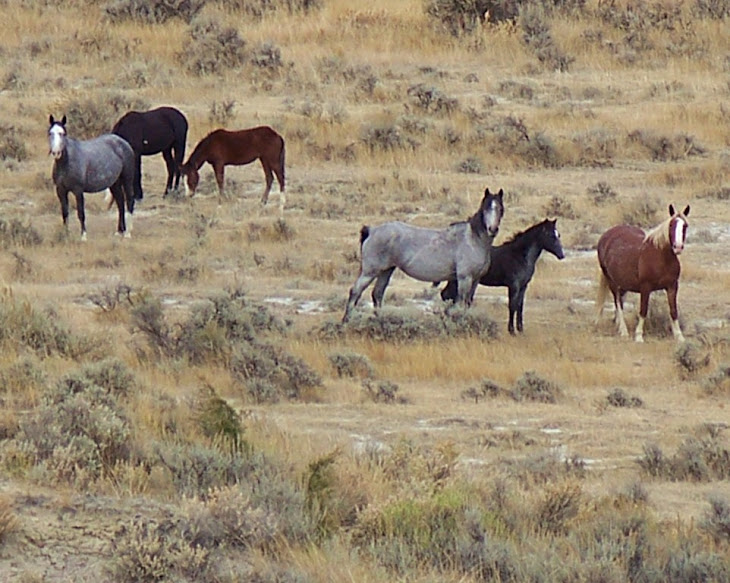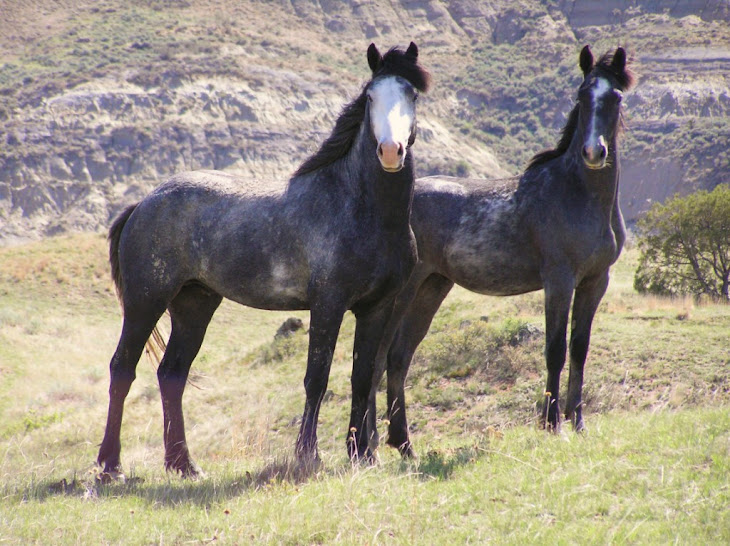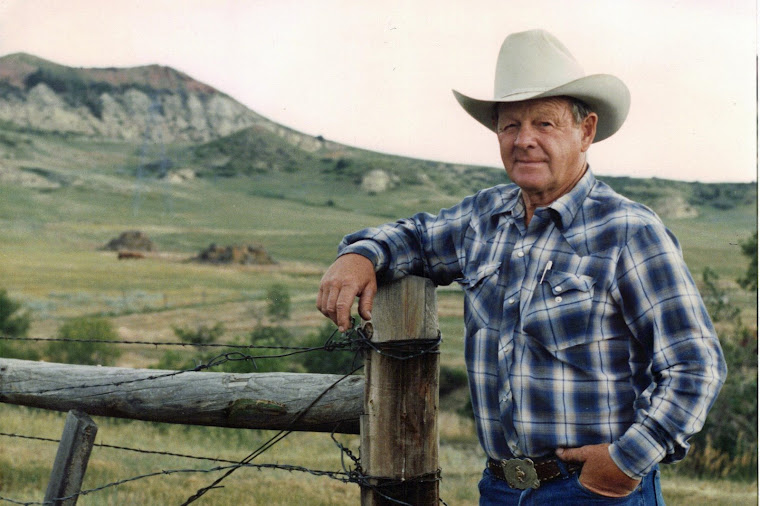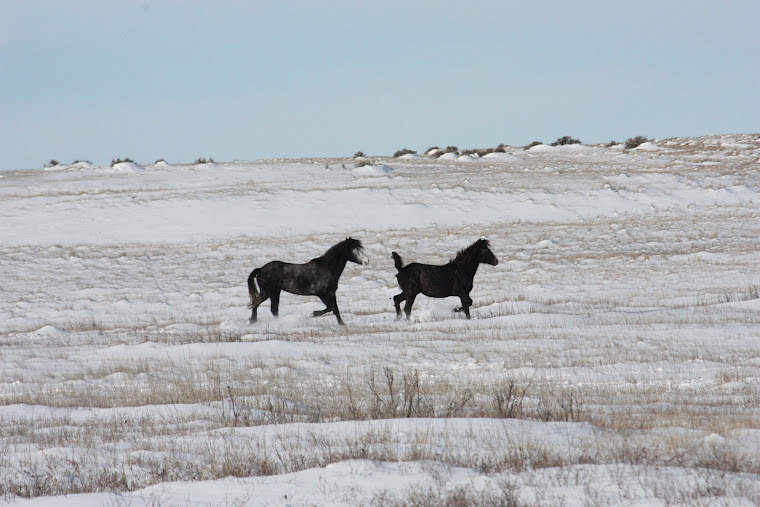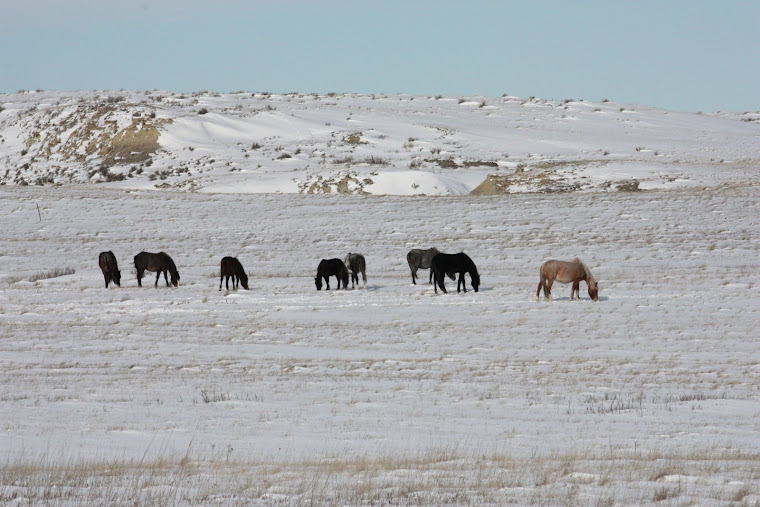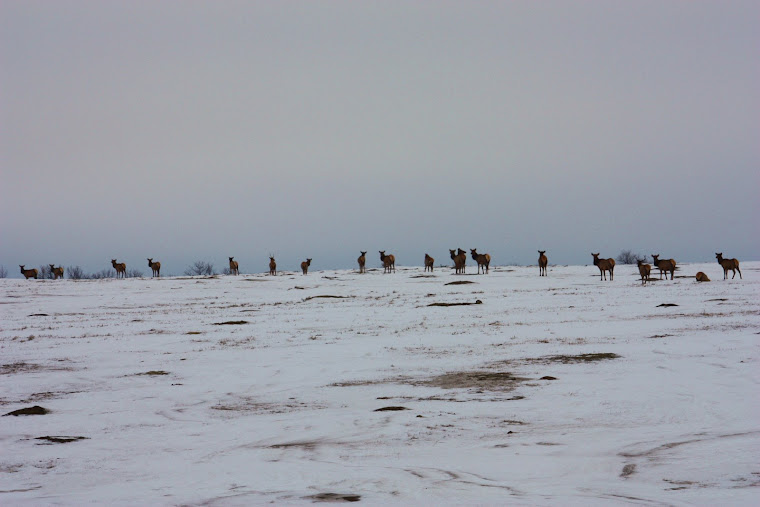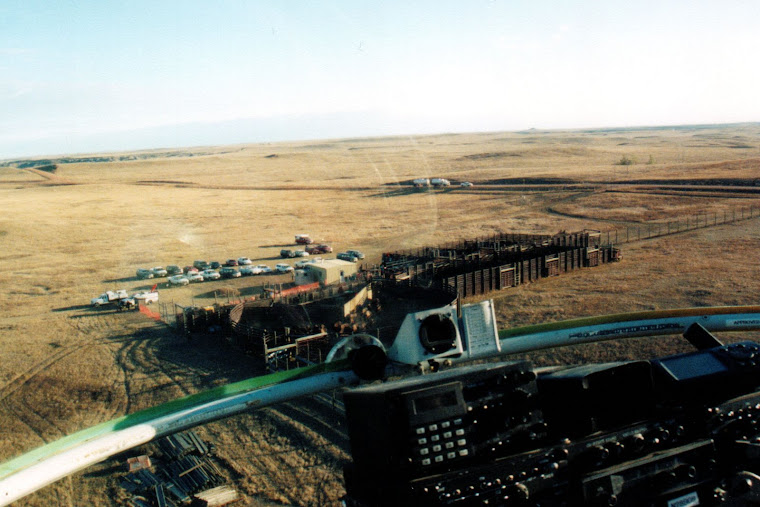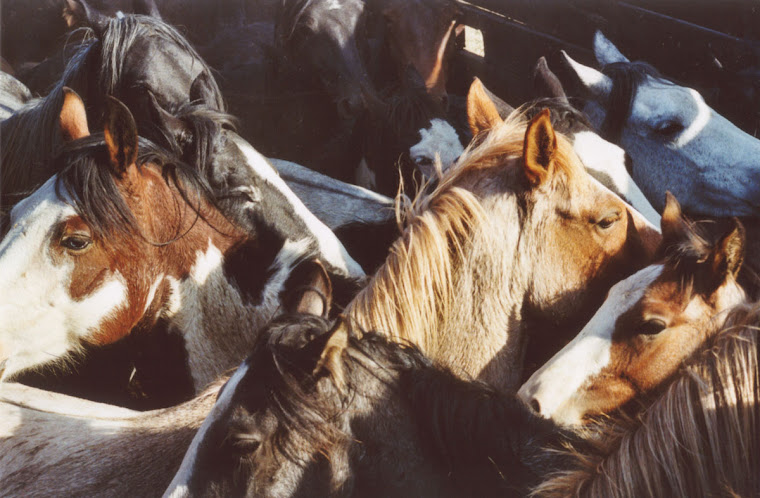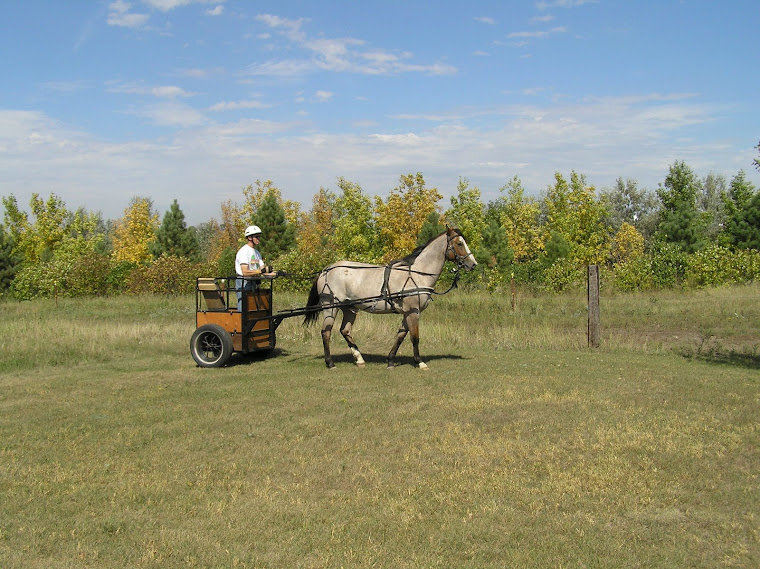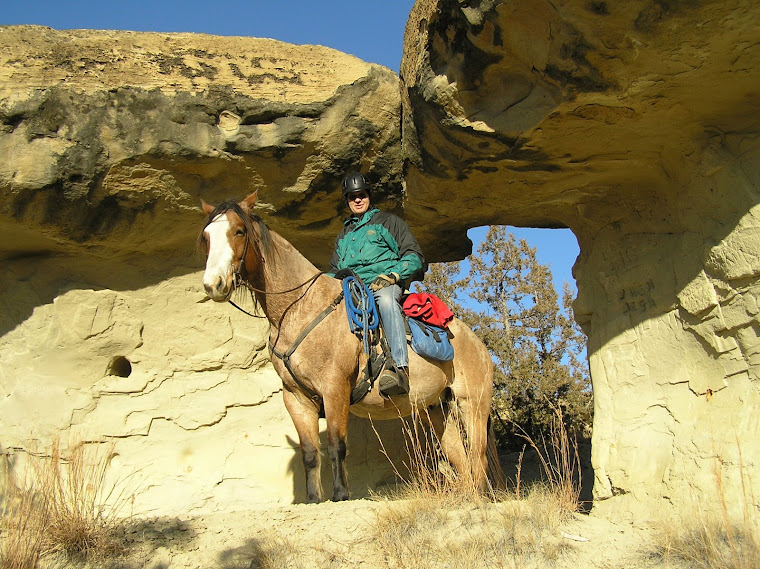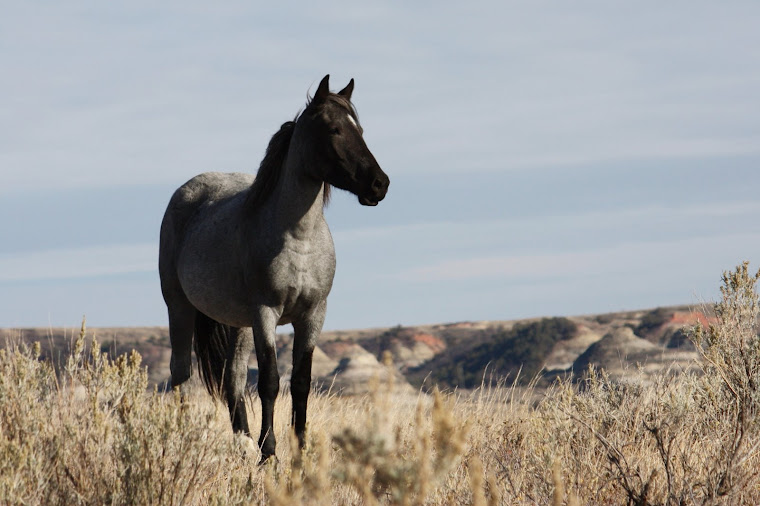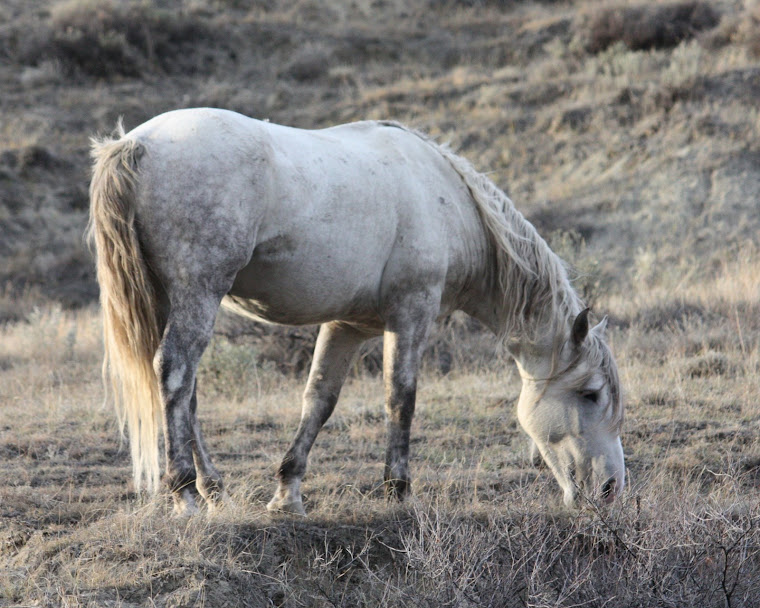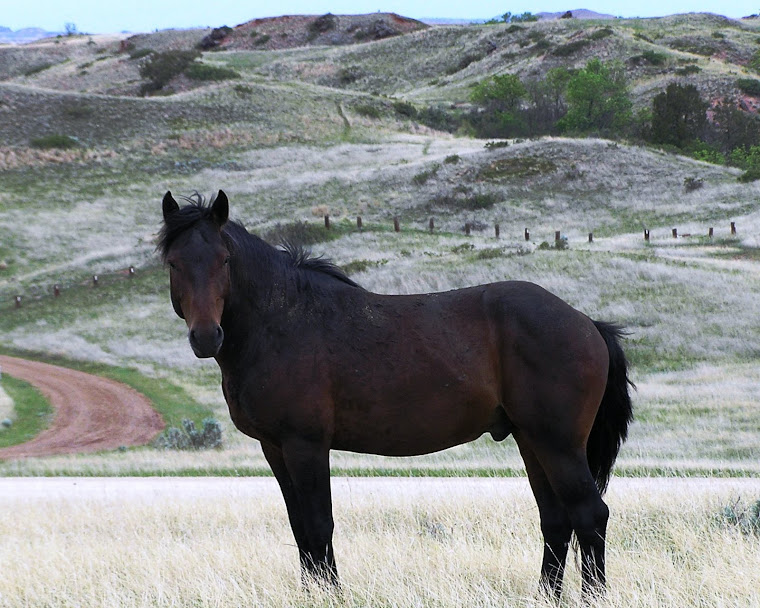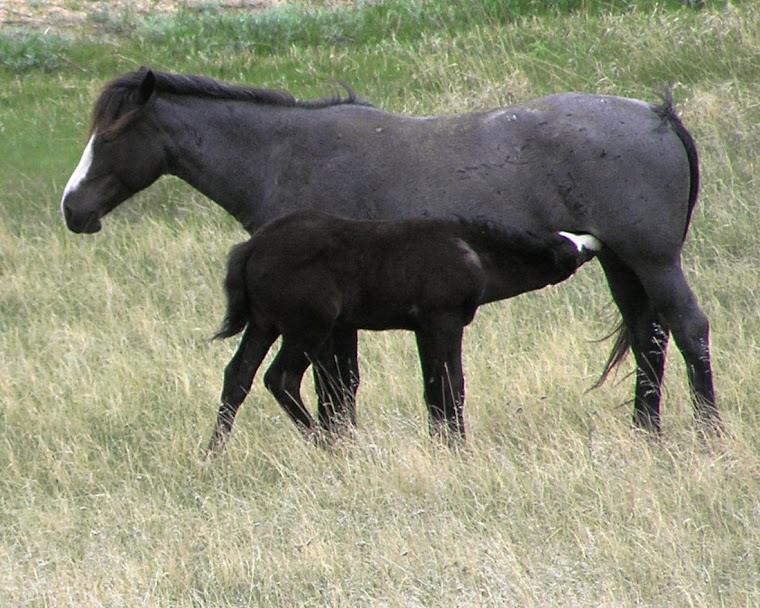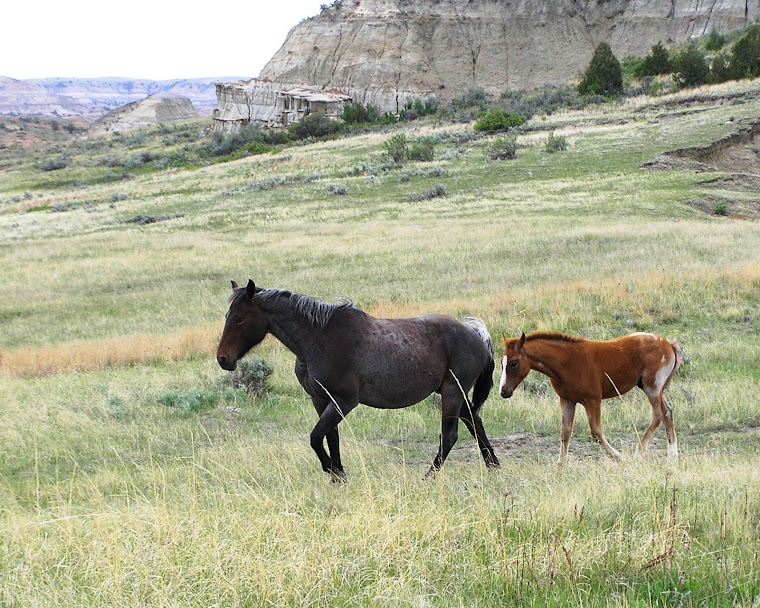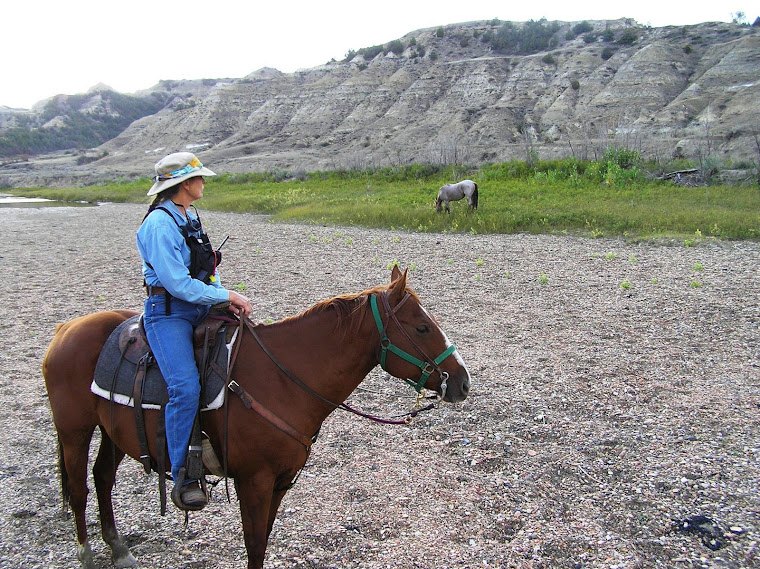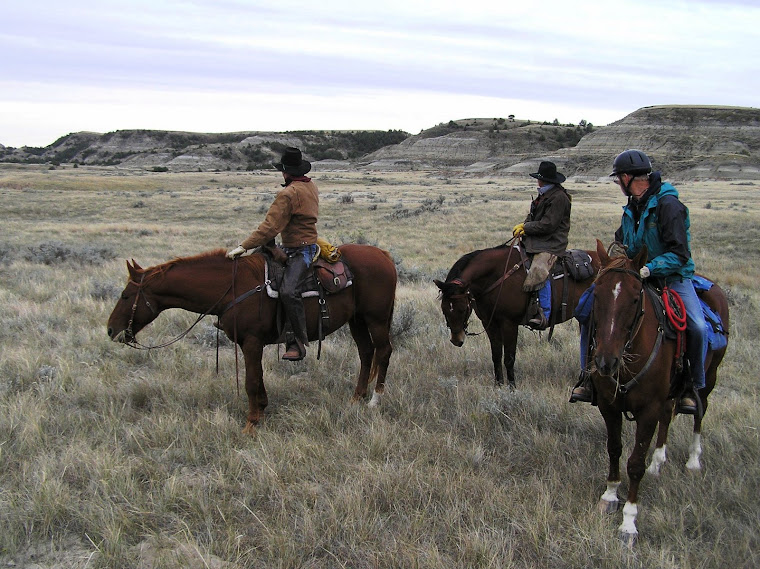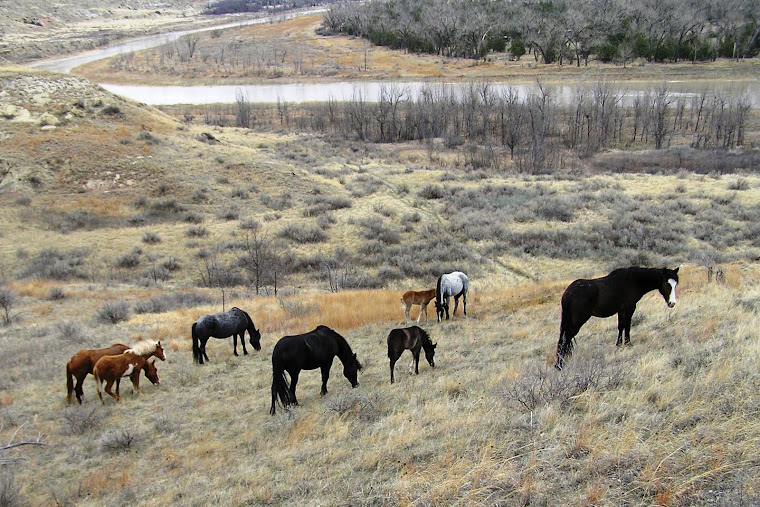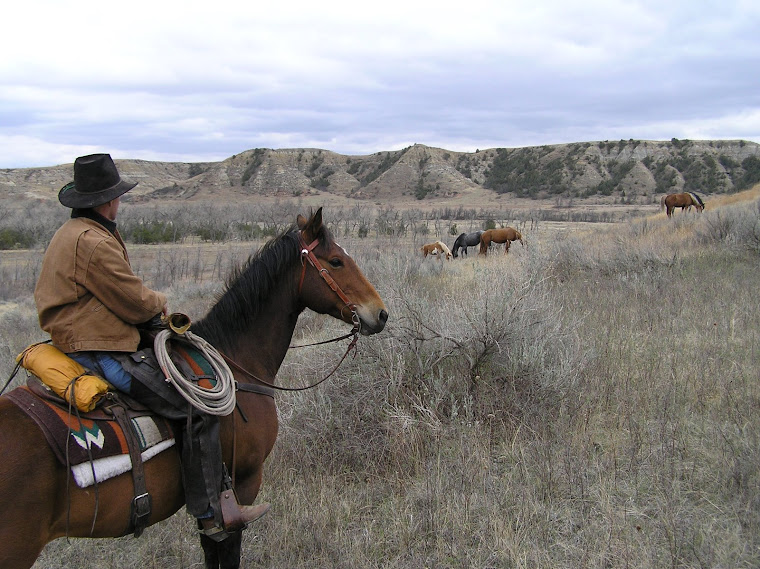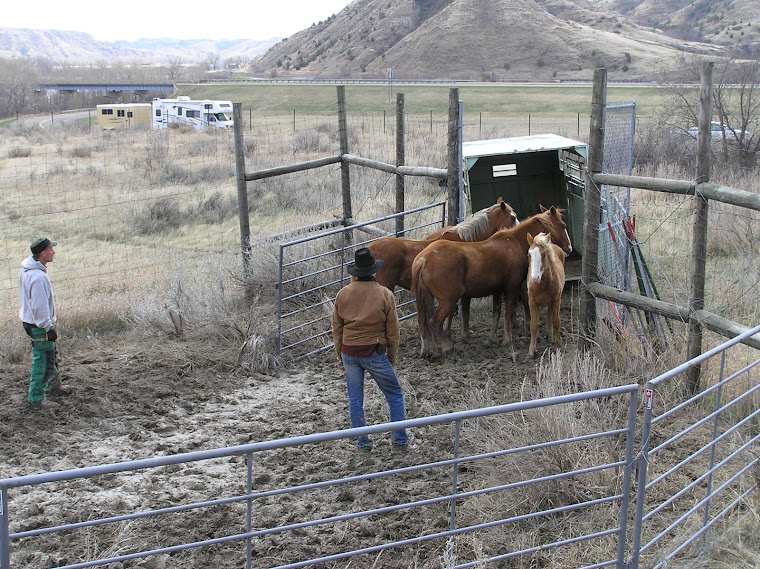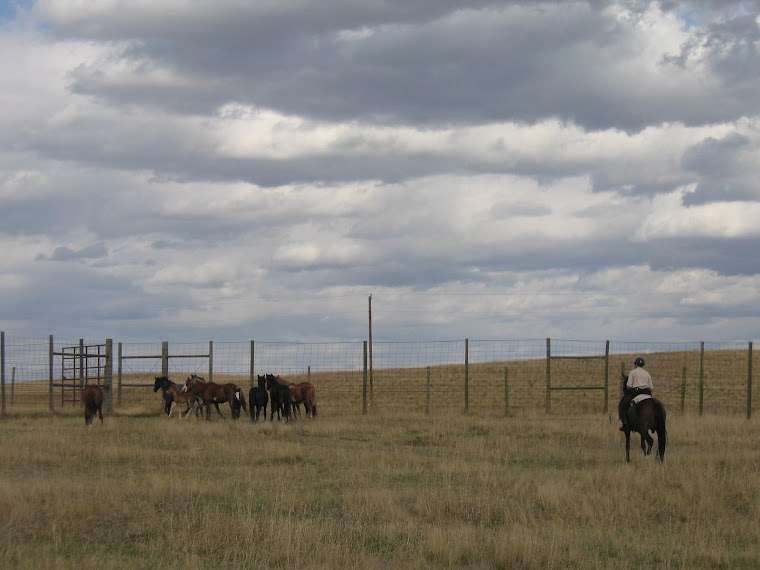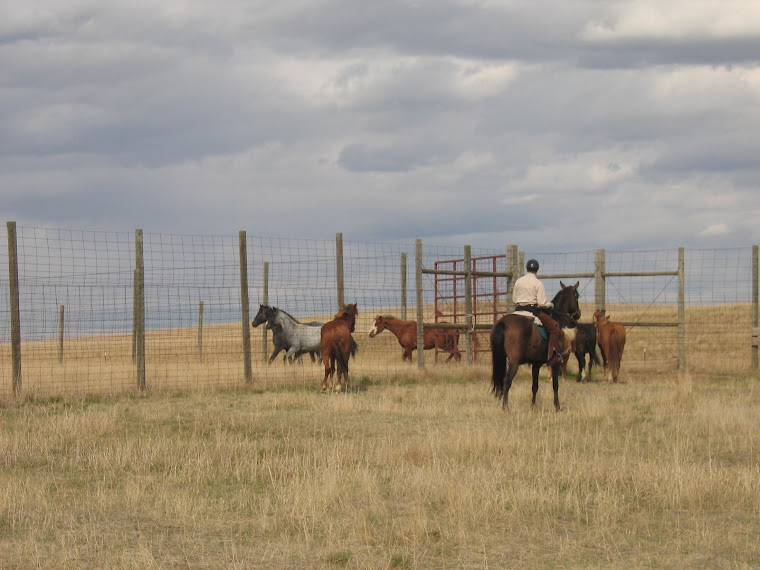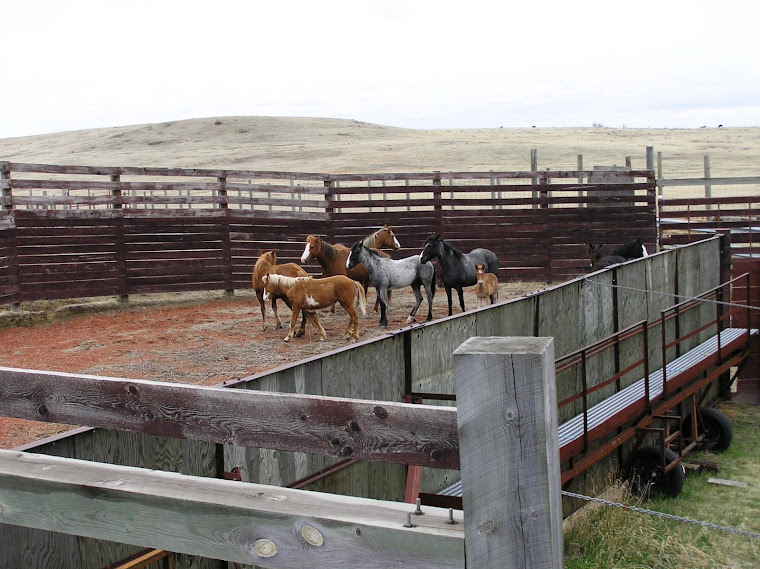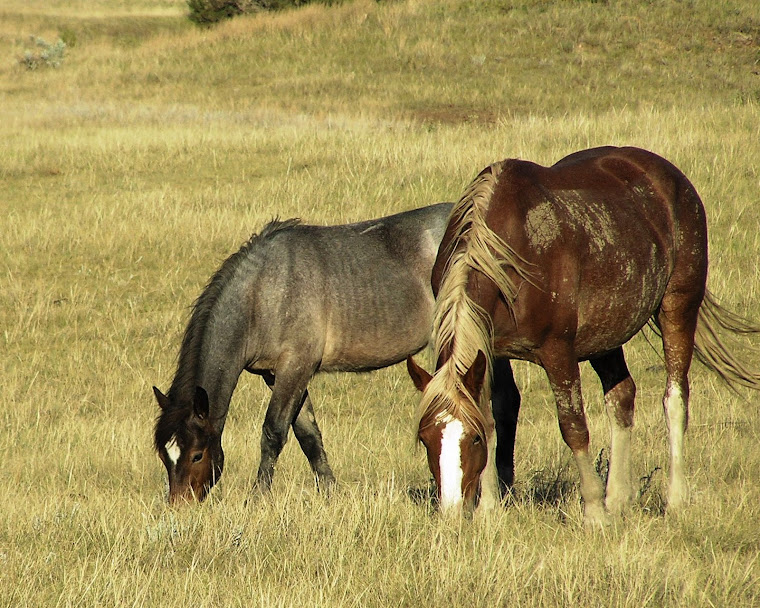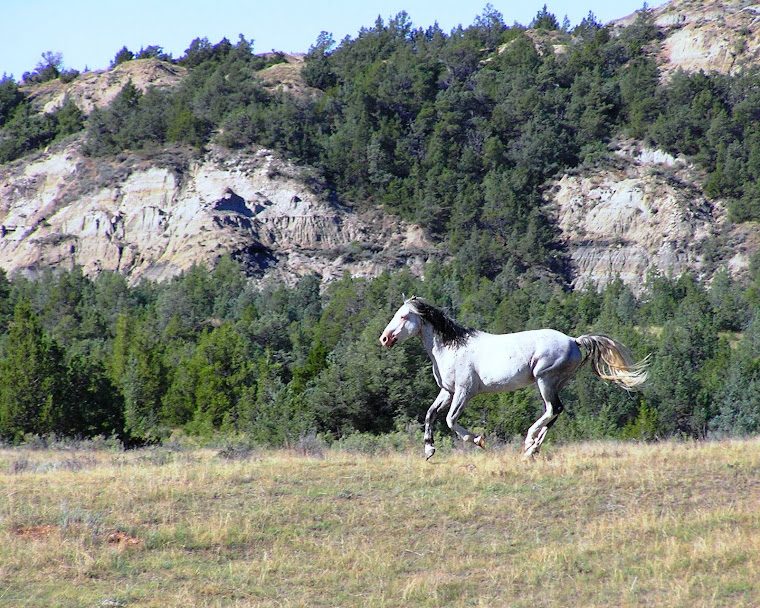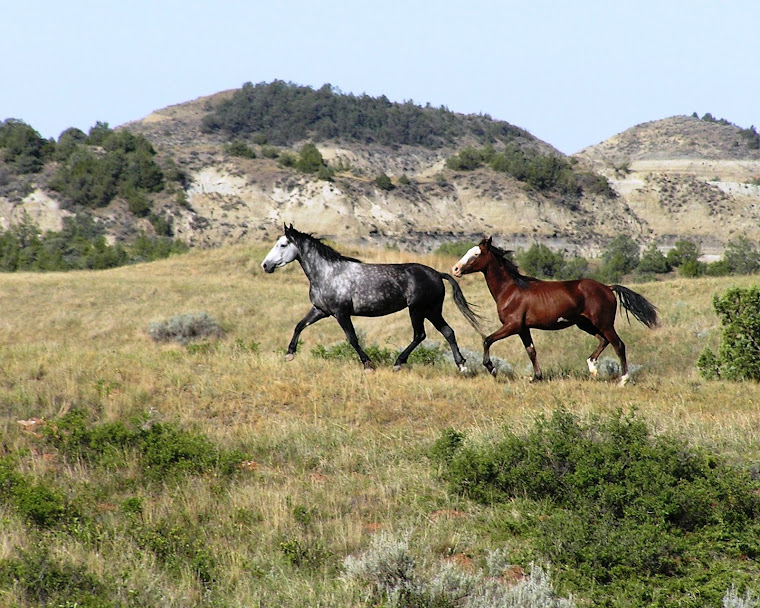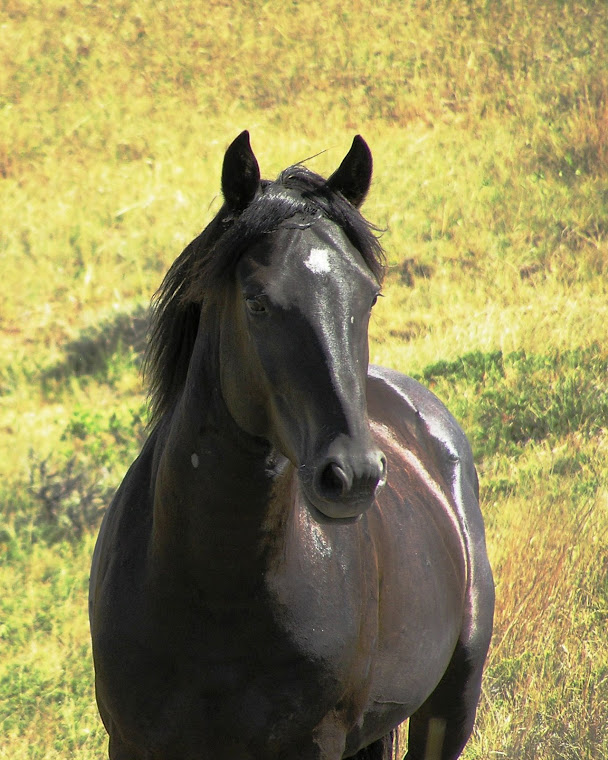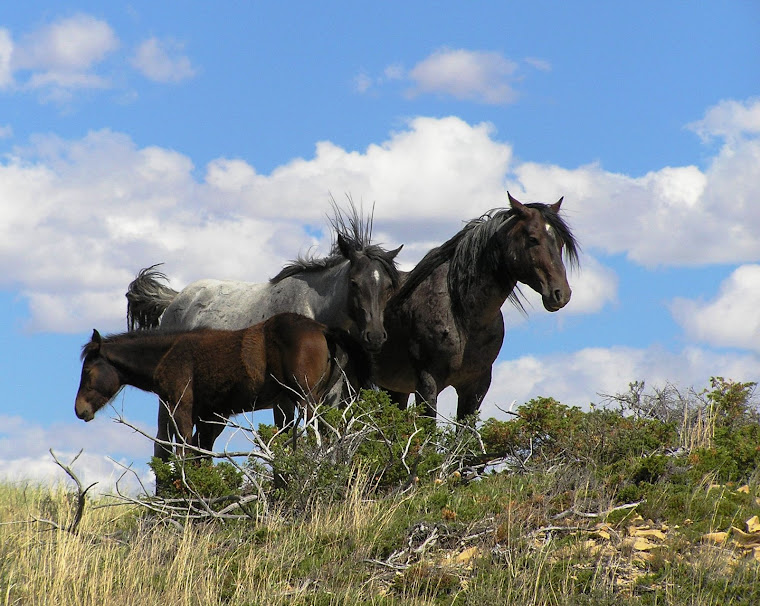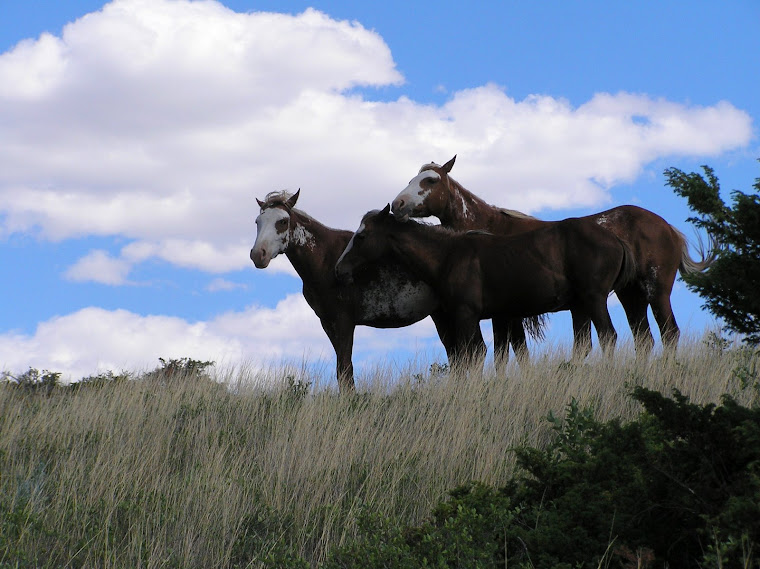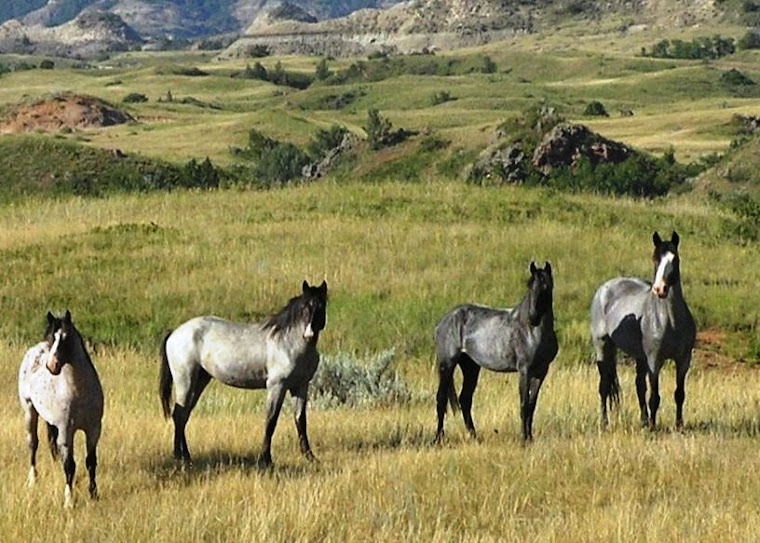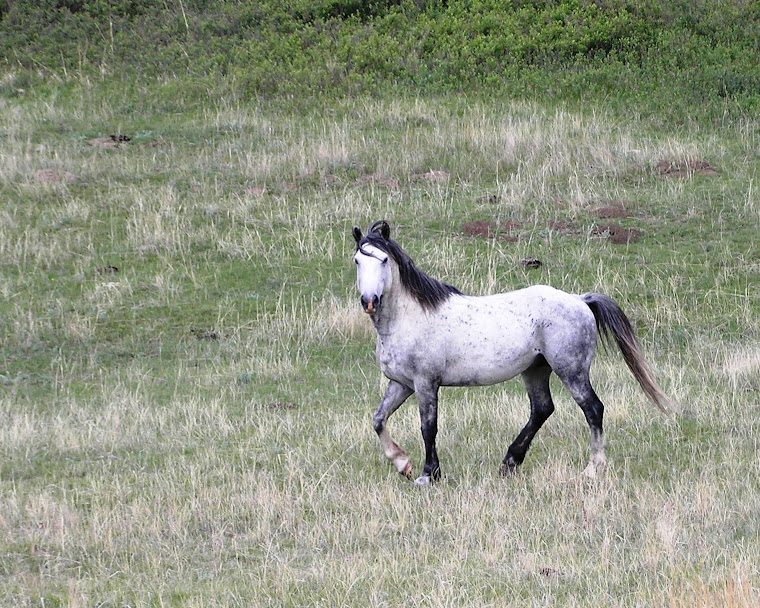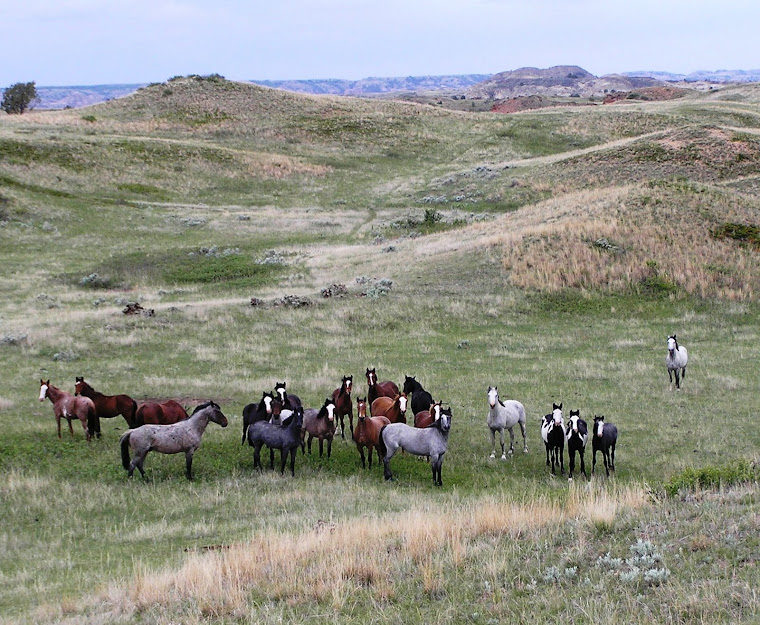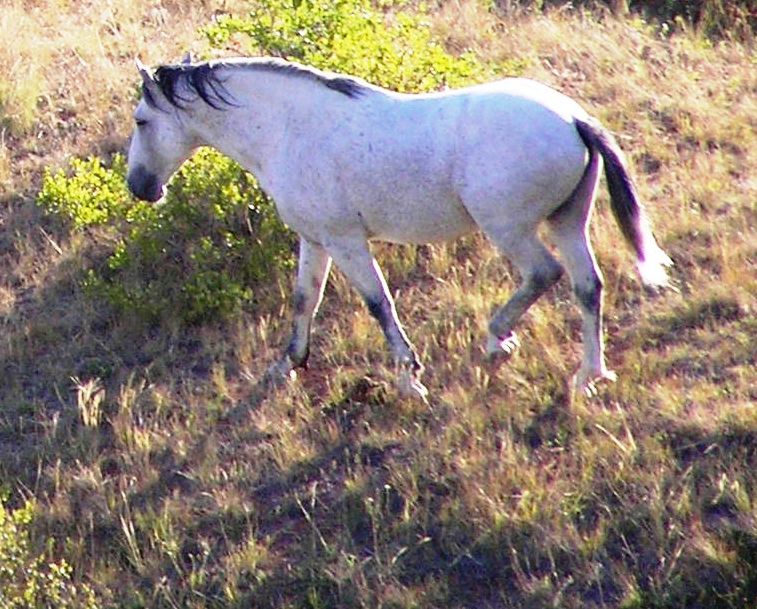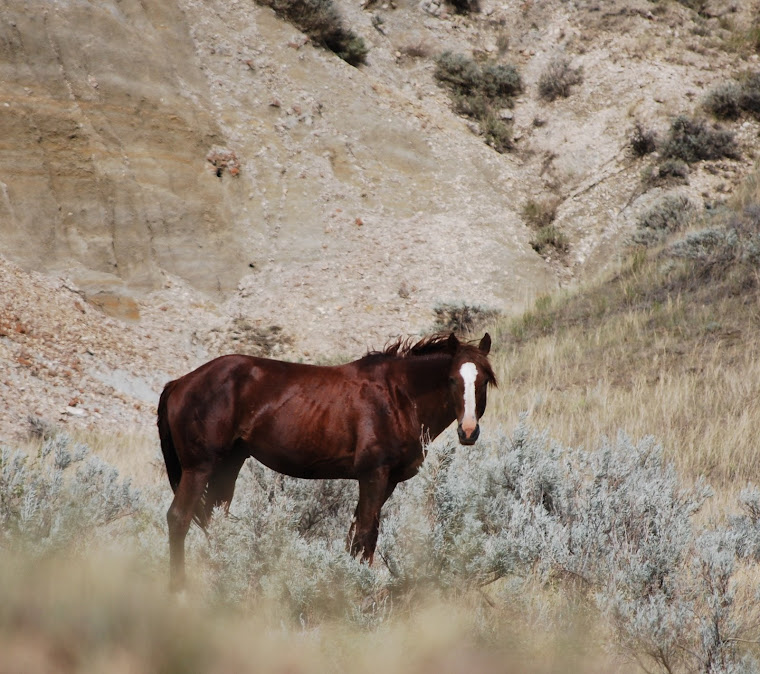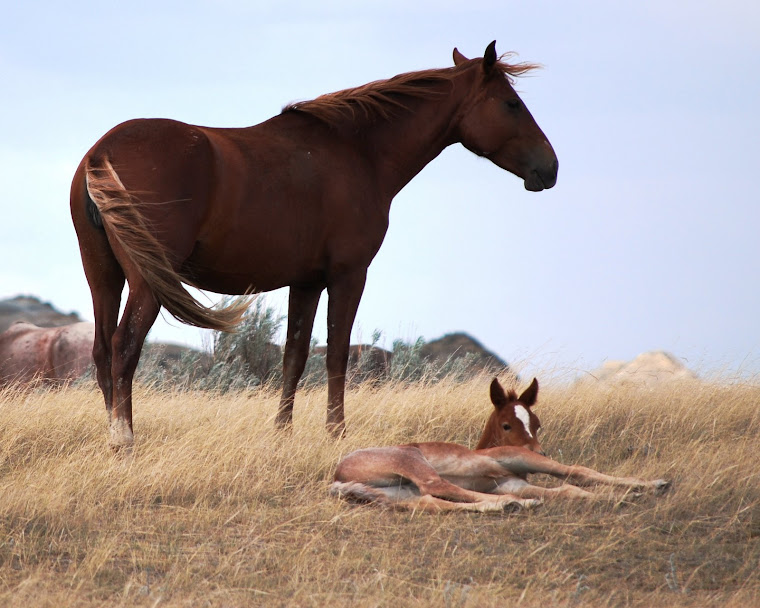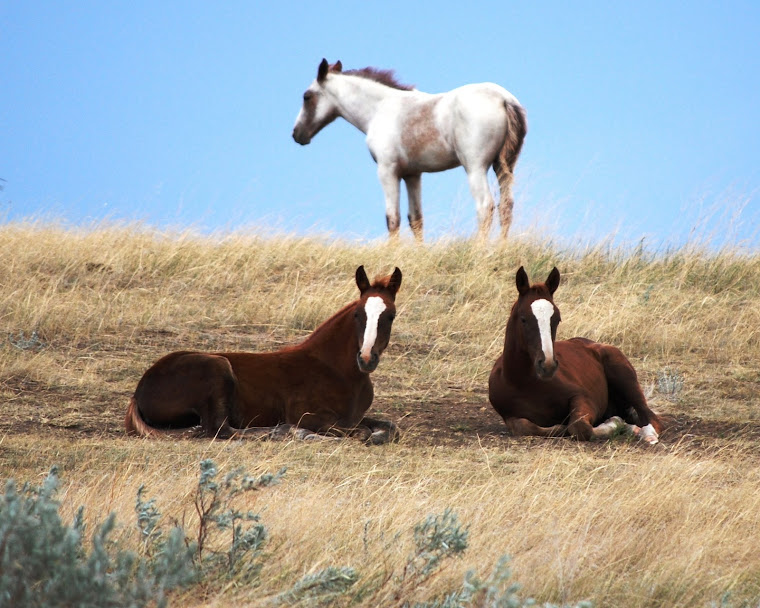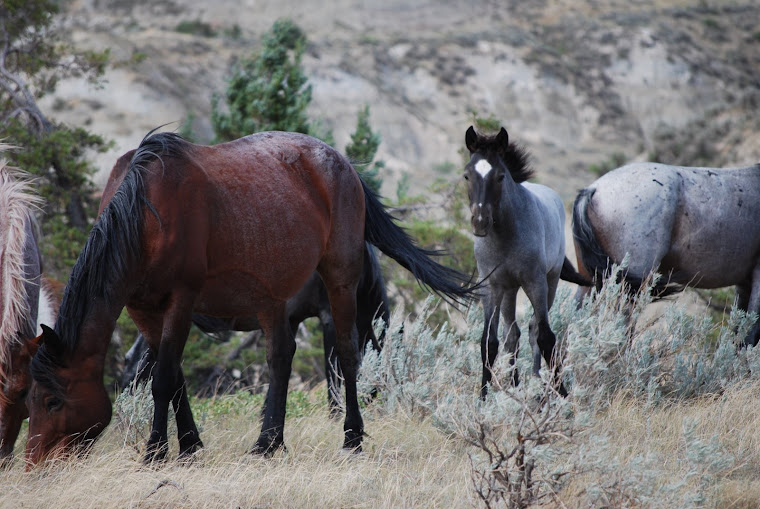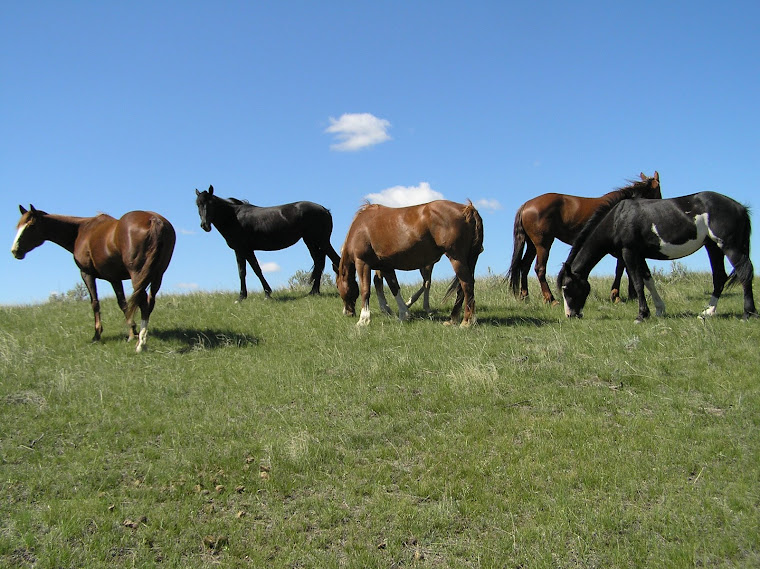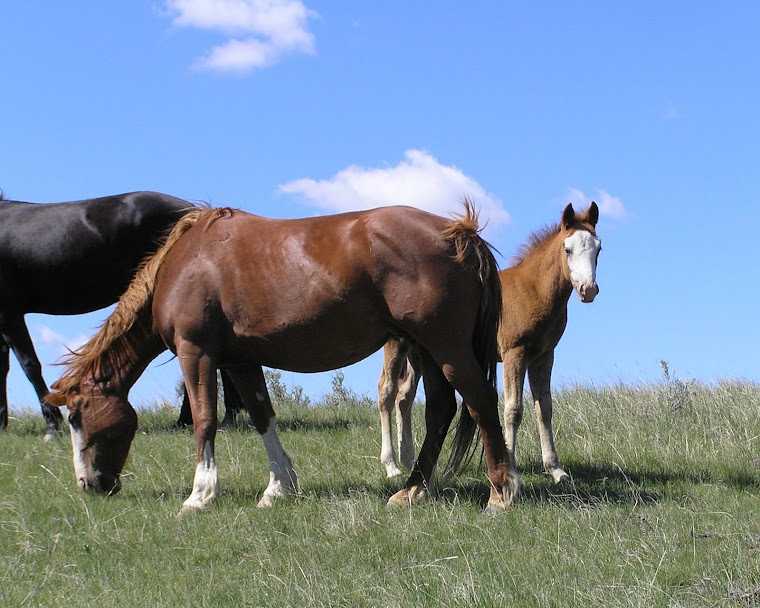Monday, October 19th dawned cold and overcast with the threat of rain for the afternoon. Stomping our feet to keep them warm, the 50+ NPS employees and feral horse study team gathered for the 7:00 am briefing. It was emphasized that the task at hand needed everyone's full attention, with an emphasis on safety. The goal was to capture and work as many of the 164 horses as possible while remaining calm, quiet, and respectful toward them and one another.
As the briefing broke up, all eyed turned upward to the windsock high above our heads. Slight winds and a high enough ceiling meant the gather was on. Mike intended to bring the horses in band by band as much as possible with no more than 20 being brought at one time. With a pulsing roar the two choppers took to the sky. Mike was in one and another NPS man in the other. A student of the low stress livestock handling method, Mike was determined to use that method throughout the operation.
Everything was ready at the handling facility on the far east side of the Park when we heard the throbbing of the chopper engines in the distance. Mike radioed that they had their first band of horses moving toward the capture pens about a half hour out. When the choppers rose above the buttes south of the wing fence, all personnel reported to the safety zone north of the high wooden pens. Only the gate keepers would be allowed out of that area until the helicopters left for another gather. Only after letting the horses settle in the fist large capture pen, did personnel walk into that grassy area and on foot bring the first band of horses into the corrals for processing. Henry's and my job was to identify each horse as it came in and follow it through the chutes so that no mistakes would be made as to which horse was getting which procedure.
Animals to be sold all had blood drawn for their Coggins test for EIA, a requirement to cross state lines. Project stallions had blood drawn and all mares had fecal samples, blood samples, palpation, and ultrasound to determine pregnancy. Most of the horses submitted amazingly well for wild animals. The Doc. was able to draw blood from little Talkington with just a hand on his neck. The Veterinarians did an amazing job of making the procedure as quickly and low stress as possible.
Since all the necessary procedures for the contraceptive study took a little longer, the choppers continued to fly, bringing horses into the pen slowly and carefully. Friends watching in the Park were amazed at how slowly the pilots brought the horses in, often at a walk. Because the horses were not so stressed when they came in, they came though the chutes much more relaxed. Less than a half dozen mares had to be sedated.
Over the two and a half days of the roundup, 154 of the 164 horses were brought in and processed. A kick to the front leg of a yearling filly was the only significant injury and she was moving well by the sale three days later. Sale horses were sorted by age and the older ones by sex so that they would not injure one another in the pens. The "keepers" were turned into another large grassy area to band up again before being released.
The afternoon of the last day, after a celebratory finishing briefing, everyone walked out to watch as a few people encouraged the horses to exit though a large gate into the Park. Dolly was the first one to find the open gate, but soon others, realizing the gate was open, walked out to freedom. They momentarily settled to eating just north of the handling facility while stallions fretted over their harems to make sure they would not be stolen by another band stallion. Quietly several stallions rounded up their mares and headed for their home range; topping the last hill they disappeared into the horizon.
Monday, October 26, 2009
Friday, October 16, 2009
WE'RE OFF
Tomorrow we leave to spend a week in the Park with our little dogs to keep us company and fight for our bed. The day will be spent tracking horses with a good friend. It will be one last weekend of relaxation and quiet before the roundup begins on Monday.
We covet your prayers for safety for all the people involved in the roundup and for the horses. Every precaution is being made to see that the horses are brought in and handled safely and that personnel are well trained to work with care and respect for these beautiful animals.
For the last two years, we have worked to make potential buyers aware of the horses, their strength, beauty, intelligence, and value as trainable companions and mounts. There are a good number of people coming from all over- California, Washington, Illinois, Minnesota, Texas, Canada, and who knows where else, to purchase the horses and take them home. It will be one of the best attended sales of the TRNP horses.
I want to thank everyone in advance for helping spread the word and coming to purchase horses. You will be bringing home a little bit of the history of the west.
Congratulations and God bless!
Watch for new stories about the roundup, the sale, and the families the horses find.
We covet your prayers for safety for all the people involved in the roundup and for the horses. Every precaution is being made to see that the horses are brought in and handled safely and that personnel are well trained to work with care and respect for these beautiful animals.
For the last two years, we have worked to make potential buyers aware of the horses, their strength, beauty, intelligence, and value as trainable companions and mounts. There are a good number of people coming from all over- California, Washington, Illinois, Minnesota, Texas, Canada, and who knows where else, to purchase the horses and take them home. It will be one of the best attended sales of the TRNP horses.
I want to thank everyone in advance for helping spread the word and coming to purchase horses. You will be bringing home a little bit of the history of the west.
Congratulations and God bless!
Watch for new stories about the roundup, the sale, and the families the horses find.
Tuesday, October 6, 2009
THE ROUNDUP AND SALE ARE COMING

I am interrupting my visit to each of the bands to make an appeal to all the wild horse lovers reading this, to get the word out about these wonderful horses needing homes. I know some of you would rather have none of the horses coming out. You love the wild horses and do not see why they cannot be left alone to run free as their ancestors did. However, there are others who would tell the Park personnel that horses are not wild animals and therefore have no place in a national park. The Park personnel have to try to keep a balance between both of the extremes while dealing with numbers of species who live in the Park.
This blog is not a forum for arguing the various views on wild horses and national park policy. Having gotten to know some of the Park people well, I have come to understand the dilemma of dealing with the abundance of animals and all the emotion that their management evokes in the public. The people who have to make these decisions, do so with great care and consideration.
It is the hope of the Park and those of us who know the wild horses of TRNP, that the day will come when numbers can be kept under control without roundups. The study which will be going on for the next few years is a huge step in that direction, but until that day, they will still have to cull the herd to keep them from growing so large that they and the other species they share the Park with are in danger of overgrazing the Park and a future of starvation.
My position is not to argue about the decisions being made, but to appeal to horse lovers to help me find homes for these awesome horses who are going to be coming out. Over the years they have lived and survived in the Park; they have become strong and resilient. Well built, they have strong bones and feet and good teeth. The ones I am familiar with are quite mellow and have gentled easily with the right training. Their beautiful variety of colors make them unique in the wild horse world.
Park personnel are trying to make buying one of the horses as easy as possible. The Coggins testing will be done at the time of the roundup, so results should be back in time for the sale. Check with your state laws to see what other paperwork you may need to cross state lines. Dr. Rowe will be on sight to do any additional vetting you may need. Since this is a public auction, you can bid on any horse and take it home as soon as you have paid for it and gotten the necessary vetting done.
Please talk to your friends and neighbors to find enough buyers to give all the horses a home. Many who are handy at training will be buying horses to gentle and train and find homes for at a later date, so make that a consideration if you don't wish to keep them all. They will have a better chance of finding a forever home if they have been gentled. The sale is at
Stockmen's Livestock Exchange West in Dickinson, ND, October 23, at 2:00 MDT.
Look at little Jules at the top of the post; can you resist those eyes?
I don't think so!
Subscribe to:
Posts (Atom)


